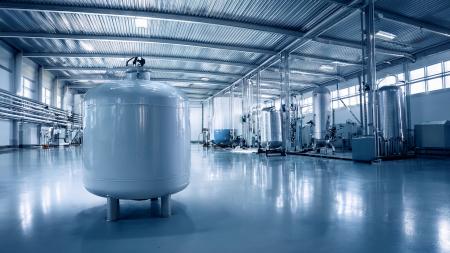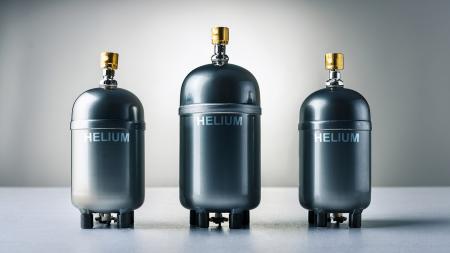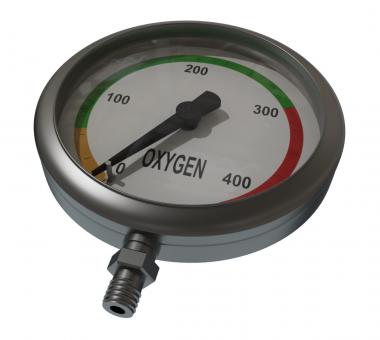To ensure that no flammable environment is created, an inert gas is often used. The introduction of an inert gas in a closed chamber is called inerting. This article explains the guidelines for inerting. For example, it discusses:
- Frequently used inert gases
- Different methods to make a system inert
- Safety limits to avoid flammability
- Methods to determine if a system is inert
The experts at Dinnissen Process Technology are available to answer all your questions:
Get in touch with Juul Jenneskens 077 467 3555
Commonly used inert gases
An inert gas does not react with oxygen or any other fuel. However, this must be handled with care, as some materials can react with steam, carbon dioxide or even nitrogen under certain conditions. The most commonly used inert gases are:
- Nitrogen.
- Carbon Dioxide.
- Steam: Steam with a pressure of more than 3 bar can be used as an inert gas because the oxygen content in it is usually negligible. However, condensation must be taken into account. Condensation can cause pressure drop, which can create a vacuum or allow air to enter.
- Flue gases: flue gases resulting from combustion can be used as an inert gas provided there is sufficient control over the oxygen concentration. The fluctuations in the oxygen concentration must be kept to a minimum.
- Noble gases: the use of noble gases is only used in applications where no other inert gas can be used because of the costs. Helium can be advantageous as an inert gas when hydrogen is used, since the molecular size of helium is approximately equal to that of the hydrogen. This makes it easier to detect leaks.
The influence of the oxygen content on explosive atmospheres is important for inerting. That is why we work with an oxygen limiting concentration (LOC). It is measured by lowering the oxygen concentration and continuing to vary the fuel concentration until no more explosion is detected. The oxygen limit concentration depends on the type of inert gas used, the temperature and the pressure of the system.
Optimal inertization for gas and vapor explosions is achieved when so much inert gas is added to the explosive mixture that the explosive range can no longer be achieved, regardless of the amount of air or fuel added. When such an inert atmosphere is subsequently released into the surrounding air, it no longer results in an explosive atmosphere. Unlike gas and vapor explosions, dust concentrations cannot be controlled as well. For that reason, it is only possible to vary with the oxygen concentration and not with the oxygen limit concentration and dust concentration.
When substances and vapors come together, they automatically form a hybrid mix. The oxygen limit concentration of such a mix is never lower than the lowest values of either substance or vapor. It is very difficult to predict when a hybrid mix is flammable. The mix can still be flammable, even when both the substance and the vapor are below their lowest explosion limit.
It should be taken into account that some substances, such as metals, have limited oxygen for combustion concentrations, as low as 2% (v / v). The limit oxygen concentration should be determined as specified in EN14034-4. For many substances, the oxygen limit concentration can also be found in the literature, but it is often not stated which method was used.

Nitrogen

Noble gas such as helium
Methods to render a system inert
There are four methods of making a system inert:
- Inertial pressure fluctuation: In this method, the system is pressurized with an inert gas and then the pressure is released. This is repeated until the required oxygen concentration is reached. It is logically only suitable for a system that can be pressurized.
- Vacuum Swing Inertia: This method evacuates the system and releases the vacuum using inert gas. It is suitable for a system that can withstand vacuum but not pressure, such as glass vessels.
- Flow-through inertia: this method feeds gas and discharges gas at the same time, both at two different points. This method is suitable for a system that cannot withstand internal and external pressures.
- Displacement inertia: this method is based on a difference in density between the inert gas and the air being removed. It is only suitable for special situations where there is a big difference in density.
Safety limits to avoid flammability
The idea behind making a process inert is to prevent the oxygen concentration in the air from becoming so high that it becomes flammable. This requires that the oxygen content is measured and adjusted so that it remains below LOC (limit oxygen concentration), even during fluctuations in the oxygen content during routine operations. Four types of oxygen concentrations have to be kept in mind:
- Oxygen Limit Concentration (LOC),
- Maximum Allowable Oxygen Concentration (MAOC) in the equipment,
- Trip point (TP): when the process controller provides a reversal point,
- Set point (SP): The point at which the process controller maintains the oxygen concentration.
When continuously monitoring oxygen concentration, a safety margin of at least 2 volume percentages below the MAOC should be maintained. Unless the MAOC is less than 5%, an oxygen concentration of no more than 60% of the MAOC should be maintained. Conversely, if the oxygen concentration is not continuously monitored, then an oxygen concentration less than 60% of the MAOC should be maintained. Unless the MAOC is less than 5%, then an oxygen concentration of less than 40% of the MAOC should be maintained. Normally a MAOC of 5% is used for organic products.
In flow control it is important that air cannot penetrate during process disruptions, even if only small leaks
Methods to determine if a system is inert
There are several methods to determine whether a system is inert or not. It can be measured directly with an oxygen sensor or by inferential methods where there is no direct measurement, but where the oxygen concentration is derived from actual measurements at different times or by calculation.
The "continuous oxygen measurement" method falls under the category of direct measurements. This measurement can be at one point or at several points. The condition is that they are representative of the system that still has to be rendered inert. In addition, the sample needs to be conditioned to remove contamination and other materials that cross-sensitive the oxygen analyzer. If a process is continuous, maintenance and calibration of the sensor must also be possible without interrupting the process.
The method of continuous oxygen measurement has several advantages. This provides a direct measurement of the safety critical parameter and the ability to regulate it immediately. In addition, the consumption of inert gas is minimal, because it is only used when it is needed. In addition, leaks and process disruptions can be detected. However, there are also some drawbacks to continuous oxygen measurement. The safety and integrity level of the oxygen sensors is in some cases insufficient. As a result, additional control methods are required to ensure safety. Finally, sensors can become contaminated with process materials.
When it comes to the inferential methods, there are several variants, namely the periodic oxygen measurement, sequential oxygen measurement, pressure control and flow control.
In the periodic oxygen measurement, the oxygen content in the air is measured several times with the aid of samples, usually with a portable oxygen meter. This method is used for calibration and to ensure that the purification method actually provides the required oxygen level. In addition, this method can also be combined with another control method, such as flow or pressure control.
In the sequential oxygen measurement, one oxygen analyzer takes a number of samples from the process equipment in a regular sequence. This will detect any deviation from the required level. This method can be used to directly control the oxygen concentration.
Pressure control is done by measuring the pressure and the number of fluctuations. This method is necessary to ensure that the maximum and minimum pressures are achieved with every swing or cycle. It should also be followed up by the periodic oxygen measurement to determine that the required oxygen level is being met at all locations. The inert air can be maintained by creating an overpressure, provided that no air is added during the process. If a system cannot be made inert with the pressure fluctuation inertia technique, the flow technique may be used first. A small overpressure is maintained in order to maintain the inert atmosphere.
In flow control, a minimum flow rate should be monitored and maintained during the time the air is inerted. Even once the air is inert, the minimum flow must be continuously monitored. The advantage of this is that leaks are detected, but at the same time the flow meter can become contaminated with process materials that come out with the ventilated gas flow. During this check it is important that air cannot penetrate during process disruptions. Even if they are only minor leaks. They can be a choking hazard in enclosed areas. Even after the flow check, the inert conditions must be confirmed by carrying out a subsequent periodic oxygen measurement.

Oxygen pressure gauge

Name: Juul Jenneskens
Advisor
Please feel free to contact me if you have any questions about this subject. My team of colleagues and I are ready to answer!
Get in touch with Juul Jenneskens 077 467 3555 [email protected]
Do you prefer to request a consultation directly?
